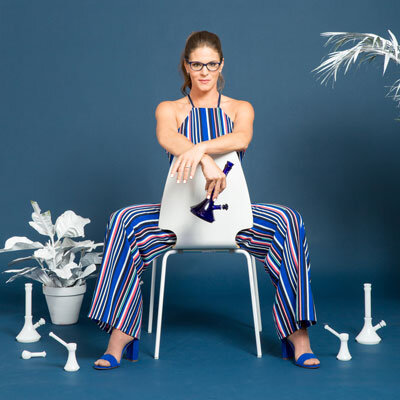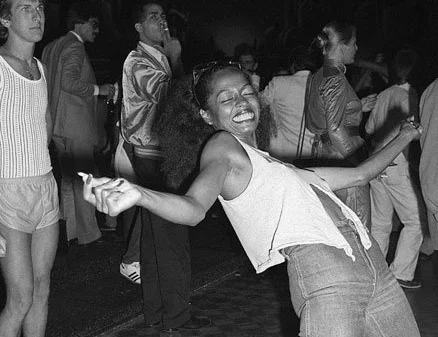Cannabis, Liberty, and the Pursuit of Happiness
I’ve been thinking about liberty and the pursuit of happiness lately.
“Life, liberty, and the pursuit of happiness.” It’s our birthright as Americans, written into the Declaration of Independence. Over the past several decades, we have increasingly pursued happiness in prescription pill bottles. With more than 70 percent of adults taking at least one prescription drug, Americans are now the most medicated people on earth. Thirteen percent of all Americans, including one in four adult women, now take some form of antidepressant or anti-anxiety drug. Doctors wrote almost 250 million opioid prescriptions in 2012 — enough for every adult in America to have their own bottle of pills. Opioid sales have quadrupled since 1999, as have deaths from prescription opioids.
The prescription is clearly not working. Our heavy reliance on pills has created what the CDC describes as a drug overdose epidemic. Today, drug overdose is the leading cause of accidental death in the U.S. More than 40 percent of those deaths are caused by opioid overdose. On average, 78 people die from opioid overdoses in this country every day. At the same time, the suicide rate for middle-age white people is climbing at an alarming rate.
How did we become the world’s most medicated nation? The United States is one of very few developed nations that allows direct-to-consumer prescription drug advertising. Pharmaceutical companies can tout their products in magazines, on the radio, on TV, and on billboards. In 1963, Valium became the first drug to launch with an aggressive marketing and advertising campaign. It was also the first drug to reach $1 billion in sales. Consumer marketing is the backbone of a more than $1 trillion industry. In America, unlike most of the world, you’ll find cheery pharmaceutical ads in magazines, on TV and radio, and on billboards. The advertisements are far more effective than the medications. Marketing primes us to pop pills.
I was at my doctor’s office recently when I realized just how pervasive pharmaceutical advertising is. Waiting to be called, I took a seat and picked up a magazine. It was an old issue ofUs Weekly. Only, it wasn’t quite Us Weekly. “Having trouble sleeping?” the cover line asked.
I thought to myself, “Well, yes, I do have trouble sleeping.” I turned the page and read on.
The helpful article I was looking for turned out to be an advertorial. What looked and felt like anUs cover feature was a glossy ad for a prescription sleeping pill called Belsomra. The four-page ad included three pages of warnings and side effects disclosures, required by law. The top three side effects — memory loss, anxiety, and abnormal thoughts and behavior — feel at home in a typical Us Weekly scandal. Prescription pills and their side effects are often central to celebrity breakdowns. And celebrity deaths. The recent news that Prince died from an accidental overdose of the powerful opioid fentanyl is only the latest tragedy.
Pick up some recent issues of women’s magazines. You’ll find page after page of slick pharmaceutical advertising. On television, we’re treated to an endless parade of cartoonified body parts and psyches that go from glum to giddy with the help of Abilify, or Celexa, or any of the thousands of legal, mind-altering substances from your pharmacy. No matter the drug, the message is always the same: The pills will fix it.
It doesn’t play out that way in real life.
At a yoga and cannabis event a couple weeks ago, I spoke with a colleague who described a time when her personal pursuit of happiness included a daily regimen of Ativan and Klonopin. “At a certain point, I realized I was a zombie,” she told me. The world came at her dull and hazy. She felt cut off from the far reaches of her emotions.
When she asked her doctor to dial back, she was told it wouldn’t be easy. “It’s harder to get off Klonopin than to get off heroin,” she explained. “Ask Stevie Nicks.”
We enter with a problem — insufficient happiness — and are offered daily pharmaceutical dependence as a cure. I believe that cannabis is our best alternative, and I want other people to know what is possible. I’m meeting more and more women who are replacing pills with cannabis wellness regimens. For decades, authorities cast cannabis as a drug that makes you lose control. When I talk with women who are new to cannabis about the plant’s therapeutic benefits, I find that many are still unwilling to try it. Over and over, I hear the same fear: losing control.
Their fear is misguided, the result of decades of drug war propaganda. The truth is that cannabis is a wellness product. It elevates the human experience. It can lead to introspection and positive shifts in perspective. Cannabis allows us to look at problems from different angles and reconsider the way we think about our lives. It doesn’t make you lose control; it enables you to tap into your natural intuition, and it empowers users to manage their stress, pain, and anxiety with a non-addictive herbal remedy.
Here’s where liberty enters the picture. We tend to define liberty in terms of physical space, but liberty also applies to our cognitive space. We should have the right to responsibly alter our own consciousness as we see fit. That may involve coffee, alcohol, or cannabis. Our minds are sacred, private spaces. By protecting cognitive liberty, we are preserving the sanctity of consciousness.
In Mexico, there’s a concept known as the “right to free development of personality.” It’s the right to think as you please, and express your individuality as you choose. Last year, Mexico’s highest court ruled the use of cannabis legal under that right. It’s time for American guardians of liberty to embrace individualism and self-determination as constitutional rights.
Cannabis is a positive force in my life. It contributes to my physical wellness and my cognitive health. Two years ago, openly identifying as a cannabis consumer was radical enough to get me on Nightline and CNBC. “Pot-smoking moms!” they called us. Now we’re just moms who use cannabis as a part of our very busy, successful, and — yes — happy lives.




